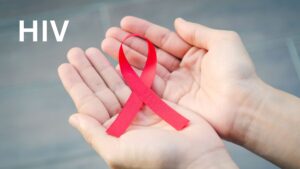
Human Immunodeficiency Virus (HIV) is a global health issue that impacts millions of people around the world.
The virus attacks the immune system, weakening the body’s ability to fight off infections and diseases.
Understanding the symptoms, diagnosis, treatment, and prevention of HIV is crucial in order to effectively manage the virus and improve
the quality of life for those affected by it.
Symptoms of HIV:
The symptoms of HIV can vary depending on the stage of the infection.
In the early stages, individuals may experience flu-like symptoms such as fever, sore throat, muscle aches, and fatigue.
These symptoms may last for a few weeks and then disappear, making it easy for some individuals to dismiss them as a common cold or flu.
However, it is important to note that not everyone infected with HIV will experience these early symptoms.
As the virus progresses and the immune system becomes more compromised, more severe symptoms may develop.
These can include weight loss, chronic diarrhea, night sweats, swollen lymph nodes, and recurring infections. In advanced stages of the infection, individuals may develop opportunistic infections or certain cancers, which are indicative of Acquired Immunodeficiency Syndrome (AIDS).
Diagnosis of HIV:
Getting tested for HIV is the only way to know for sure whether you are infected with the virus.
HIV testing is typically done with a blood test that looks for antibodies or antigens produced by the virus. There are also rapid HIV
tests that can provide results in as little as 20 minutes.
If the initial test comes back positive, additional testing will be done to confirm the diagnosis. This may include a viral load test to measure the amount of HIV in the blood, as well as a CD4 count test to assess the health of the immune system.
Early diagnosis is crucial in order to start treatment and prevent the progression of the virus to AI”S. Treatment of HIV
While there is currently no cure for HIV, antiretroviral therapy (ART) has been highly effective in managing the virus and
improving the quality of life for individuals with HIV.
ART consists of a combination of medications that work to reduce the viral load in the body, allowing the immune system to recover and function more effectively.
It is Important to start ART as soon as possible after diagnosis in order to prevent the virus from causing further damage to the immune system. Adhering to the treatment regimen is essential to ensure the effectiveness of the medications and reduce the risk of developing drug resistance.
Regular monitoring by healthcare providers is also necessary to adjust the treatment as needed and address any side effects that may arise.
Prevention of HIV:
Preventing the transmission of HIV is essential in reducing the spread of the virus. Safe sex practices, such as using condoms consistently and correctly, can help reduce the risk of HIV transmission during sexual activity.
Limiting the number of sexual partners and avoiding high-risk behaviors, such as sharing needles, can also lower the risk of infection.
Pre-exposure prophylaxis (PrEP) is a prevention method that involves taking a daily pill to reduce the risk of HIV infection in individuals at high risk of exposure.
It is important to consult with a healthcare provider to determine if PrEP is a suitable option and to receive guidance on its proper use.
Regular HIV testing is another important aspect of prevention, as it allows individuals to know their HIV status and seek treatment if needed.
HIV testing should be a routine part of healthcare for all individuals, especially those who are sexually active or at high risk of HIV infection.
In conclusion, HIV is a serious virus that requires ongoing attention and care to manage effectively. By understanding the symptoms, diagnosis, treatment, and prevention of HIV, individuals can take proactive steps to protect themselves and others from infection.
Early diagnosis, prompt treatment, and preventive measures are key in combating the spread of HIV and improving the health and well-being of those affected by the virus.
Together, we can work towards a world where HIV is no longer a public health threat and where all individuals have access to the care and support they need to live healthy and fulfilling lives.